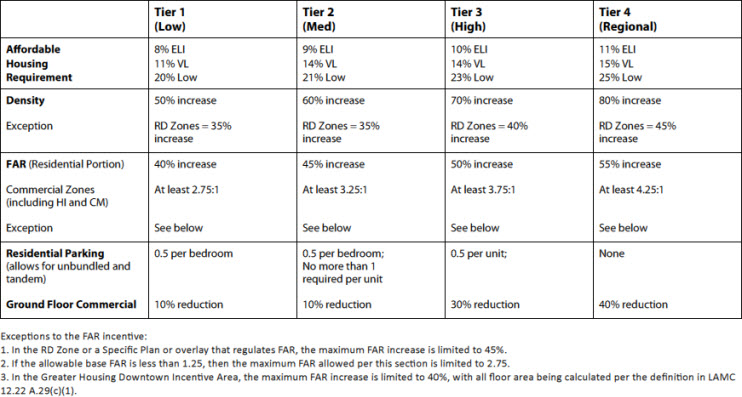Today, California Governor Jerry Brown signed a package of new bills to facilitate the development of affordable housing units throughout the state, including a bill that will streamline local review and environmental review of certain development projects that include affordable housing units.
Specifically, Senate Bill 35 will require a ministerial review process for projects with affordable units in cities and counties that have not satisfied their regional housing needs by income category. Without the streamlined process, these projects would typically be subject to a discretionary approval by a local agency and subject to full environmental review under the California Environmental Quality Act (CEQA). However, as a ministerial approval, projects subject to the streamlined process would not be subject to CEQA review.
SB 35 amends relevant provisions of the California Government Code to require streamlined review if a proposed project meets the following conditions:
- The project is a multifamily housing project that contains at least two residential units.
- The project will be developed on a legal parcel or parcels that are in urbanized areas and already zoned for residential or residential mixed-use development under the applicable zoning code and general plan land use designation.
- At least two-thirds of the square footage of the project is designated for residential use.
- The project will include a certain percentage of affordable units that are designated as affordable for 55 years for rental units and 45 years for for-sale units.
- The project is consistent with the applicable zoning standards and design review standards.
The required percentage of affordable units depends on the locality’s compliance with the state’s regional housing needs. For example, in localities that reported fewer units of above moderate-income housing than were required under the regional housing needs assessment cycle for that year, the project will be required to include a minimum of 10% of its total units for tenants making below 80% of the median income.
The streamlined approval process will not apply to projects located in the coastal zone, on land designated as wetlands, on land that is habitat for sensitive species or is otherwise designated for conservation, on land that is a hazardous waste site, or on land that is within a fire, flood, or earthquake fault zone. The streamlined process will also not apply to developments that will require demolishing existing affordable or rent-controlled housing units, housing units that have been occupied by tenants within the past 10 years, or that would require demolishing a historic structure. The measure will also require developers to pay a minimum of prevailing wage for the construction of projects with nine or more residential units, and will require certain projects to be completed by a skilled and trained workforce as defined under the California Labor Code.
For projects that meet all the requirements for a streamlined approval, SB 35 allows a city or county planning commission or equivalent commission to conduct the design review or public oversight of the development. However, the design review or public oversight must be objective and cannot inhibit, chill, or preclude the ministerial approval provided under the new process.
The bill also requires cities and counties to provide the California Office of Planning and Research and California Department of Housing and Community Development with more information concerning the approvals issued for new rental and for-sale units for each income category each year. The new streamlining process will remain in effect until January 2026.
Other bills related to affordable housing that Governor Brown signed include a bill that imposes a fee of $75–$225 on certain real estate transactions, including the recording of documents (SB 2). Revenues generated from that fee will be spent on initiatives to combat homelessness and facilitate further development of affordable housing units. Another bill (SB 3) will place a $4 billion bond on the November 2018 ballot to pay for other housing development programs and help military veterans purchase homes.
City of Los Angeles Transit Oriented Communities Affordable Housing Incentive Program Guidelines
The Transit Oriented Communities Affordable Housing Incentive Program Guidelines (TOC Guidelines) went into effect on September 22, 2017. The TOC Guidelines were developed to implement Section 6 of voter-approved Measure JJJ by establishing incentives for building residential or mixed-use projects with affordable units located within a one-half mile radius of a major transit stop. A four-tier system (TOC Tier), based on the type of and proximity to a transit stop, is used determine the minimum percentage of on-site restricted affordable housing units that shall be provided in a housing development in order to receive development incentives.
A new line item showing the TOC Tier for all parcels within the city has been added to ZIMAS. All housing developments that meet the TOC Guidelines are eligible to receive the base incentives summarized in the chart below.

Up to three additional incentives may be granted for projects that provide a certain percentage of base units for extremely low-, very low-, or lower-income households as described in Section IV.5 of the TOC Guidelines. “Base units” are the maximum allowable density permitted in the zone, before any density increase provided through the TOC Guidelines. The affordable housing units required for the additional incentives may also count toward the on-site restricted affordable unit requirement in each TOC Tier. Additional incentives may include an increase in building height and the maximum lot coverage, a decrease in setbacks and open space, floor area averaging, and other development standards listed in Section VII.
The Los Angeles Department of City Planning has created a new TOC Application Form that must be reviewed and approved before submitting an application for a case or building permit. The TOC program will be in effect for 10 years unless the city council extends it for an additional five years.

